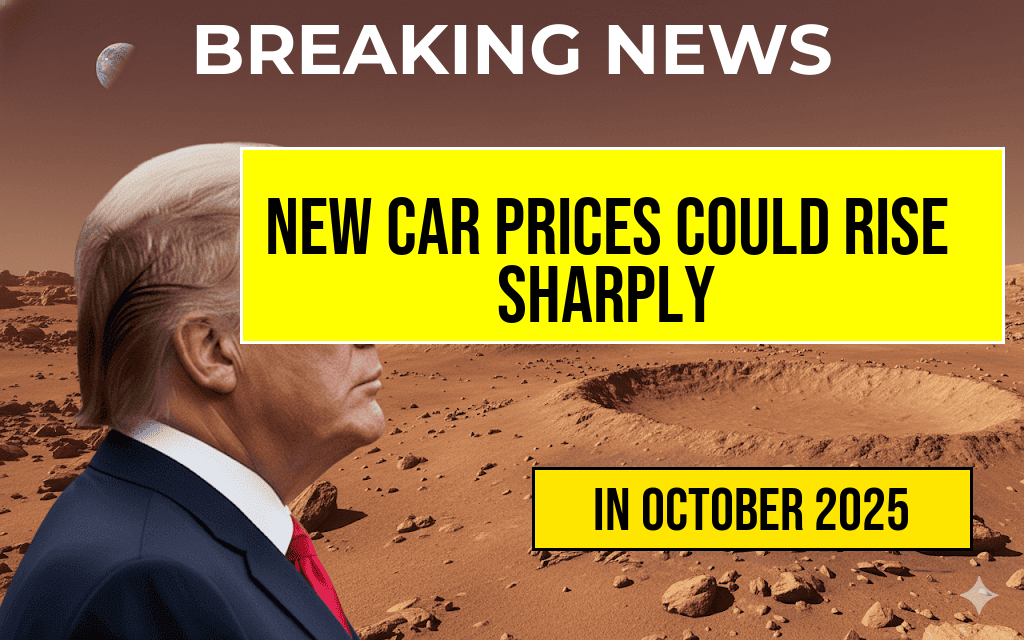The prospect of increased tariffs under former President Donald Trump’s trade policies threatens to significantly raise new car prices for American consumers. Industry analysts warn that if the threat of tariffs is realized, the average cost of a new vehicle could surge by as much as $5,286, impacting millions of buyers and potentially reshaping the automotive market landscape. The potential price hikes stem from tariffs on imported auto parts and vehicles, which could increase manufacturing costs for automakers relying on international supply chains. This development comes amid ongoing trade tensions and policy debates over tariffs, with experts emphasizing that such measures could have far-reaching consequences beyond the trade sector, affecting consumer affordability and industry competitiveness.
Understanding the Context of Tariffs and Auto Prices
The Origins of the Tariff Threat
During his presidency, Donald Trump implemented a series of tariffs aimed at protecting domestic manufacturing and addressing trade imbalances, particularly with China. While some tariffs targeted steel and aluminum, a significant focus was placed on automotive imports, which constitute a substantial portion of the U.S. market. The threat of reinstating or expanding tariffs on foreign-made vehicles and auto parts has persisted, especially amid negotiations over trade agreements and concerns about supply chain vulnerabilities.
How Tariffs Affect Vehicle Pricing
Tariffs increase the cost of imported goods, and since many automakers rely on international supply chains for components, these costs often trickle down to consumers. An analysis from Forbes indicates that a 25% tariff on imported auto parts could translate into a $1,200 increase in vehicle prices on average. When combined with tariffs on complete vehicles, the total potential increase is estimated to reach approximately $5,286 per new car, based on current market valuations and import dependencies.
Potential Impact on the Auto Industry and Consumers
Market Dynamics and Consumer Choices
- Manufacturers may pass costs onto buyers, resulting in higher sticker prices.
- Consumers could shift preferences toward domestic brands or used vehicles to avoid premium pricing.
- Pricing increases might slow new vehicle sales, affecting dealerships and automaker revenues.
Automaker Responses and Strategies
Automakers are evaluating options to mitigate the impact of tariffs, including diversifying supply chains, relocating manufacturing facilities, or absorbing additional costs temporarily. However, these strategies may not fully shield consumers from higher prices, especially if tariffs are imposed swiftly or escalated further.
Economic and Policy Considerations
Broader Economic Implications
Elevated vehicle prices could dampen overall consumer spending, especially as transportation remains a critical expenditure for American households. A surge in new car prices might also tighten inventory levels, leading to longer wait times and fewer options for buyers.
Policy Uncertainty and Industry Response
Industry leaders and policymakers are closely monitoring developments. While some argue that tariffs may protect domestic jobs and industries, critics warn that higher costs could ultimately harm the very sectors they aim to bolster. The potential price increase underscores the delicate balance between trade policy ambitions and consumer affordability.
Comparative Data: Projected Price Increase
| Scenario | Estimated Average Price Increase | Details |
|---|---|---|
| Tariffs on Auto Parts Only | $1,200 | Based on a 25% tariff, affecting manufacturing costs |
| Additional Tariffs on Imported Vehicles | $4,086 | Potential combined increase reaching over $5,000 |
| Total Estimated Surge | $5,286 | Sum of parts and vehicle tariffs impacts |
Industry Outlook and Consumer Advice
While the full scope of tariff implementation remains uncertain, consumers contemplating new vehicle purchases should stay informed about ongoing policy developments. Automakers may adjust pricing strategies, and market conditions could shift rapidly if tariffs are imposed or withdrawn. Experts recommend exploring options such as certified pre-owned vehicles or alternative financing to mitigate potential cost increases.
Trade policy shifts continue to influence the automotive landscape, highlighting the importance of staying updated through reputable sources like Wikipedia’s overview of U.S. trade tariffs. As negotiations unfold, both industry stakeholders and consumers face a period of increased uncertainty that could reshape the cost and availability of new vehicles in the near future.
Frequently Asked Questions
What is the main reason for the potential increase in new car prices?
The potential surge in new car prices is primarily due to Trump’s tariff threat on imported vehicles and parts, which could lead to additional costs for manufacturers and consumers.
By how much could new car prices increase according to the article?
The article estimates that car prices could rise by up to $5,286 due to the tariff threat.
Which types of vehicles are most likely to be affected by the tariff hike?
Both imported vehicles and parts used in manufacturing are expected to see the most significant impact, potentially increasing the overall cost of new cars.
How might these price increases affect consumers and the automotive market?
Higher car prices could reduce sales and make new cars less affordable for consumers, potentially slowing market growth and impacting automakers’ profits.
Is there any indication of how long these tariff threats might influence car prices?
The article suggests that unless the tariffs are implemented or lifted, the potential impact on car prices remains uncertain, but the threat alone could cause price fluctuations in the near term.

Leave a Reply